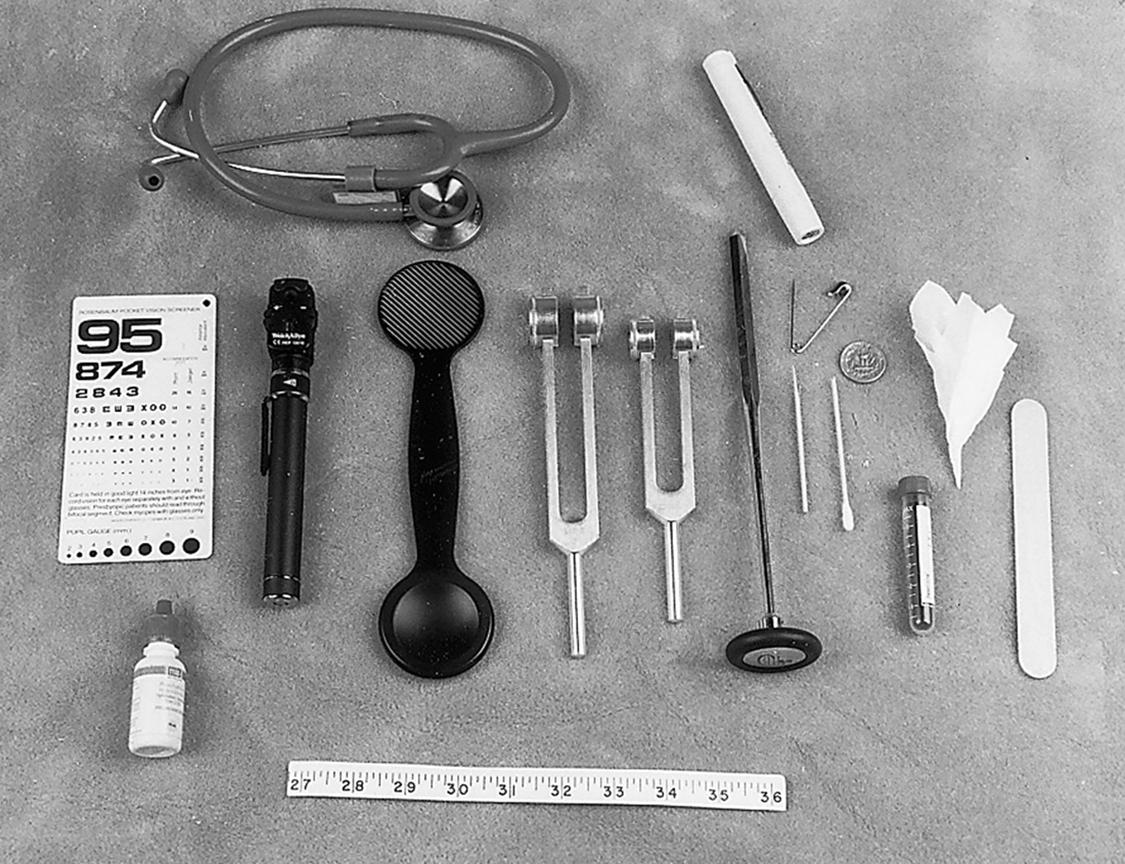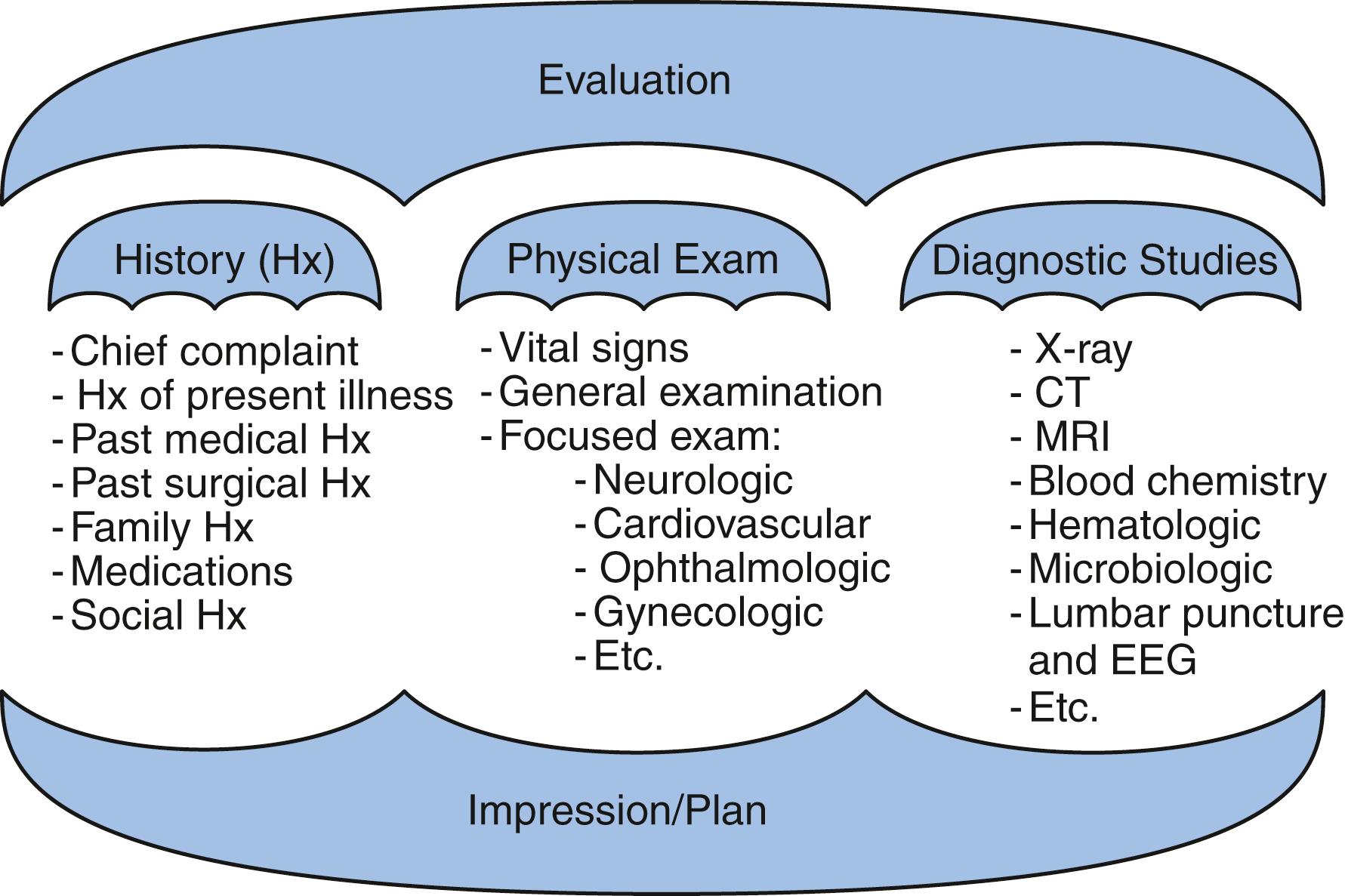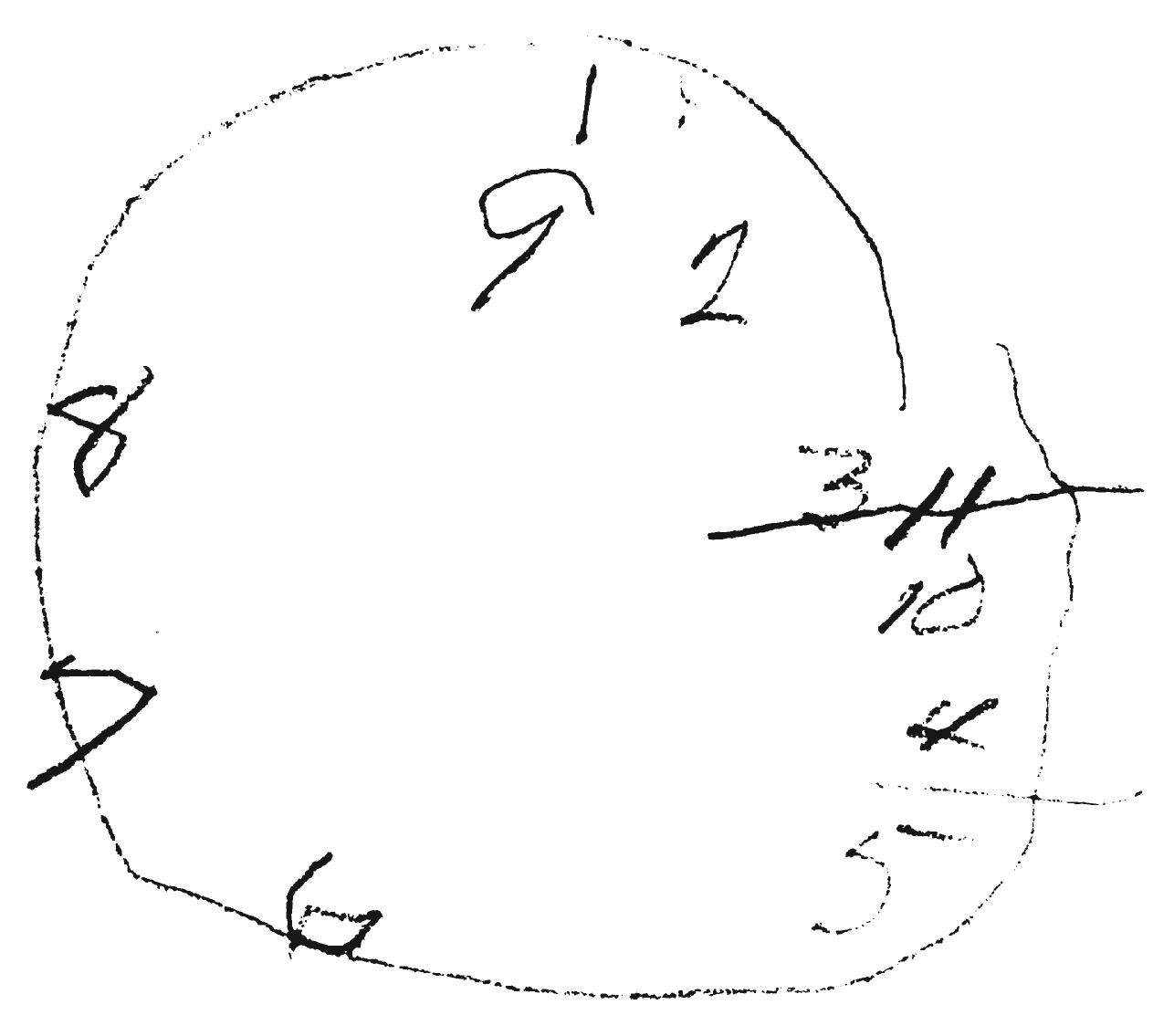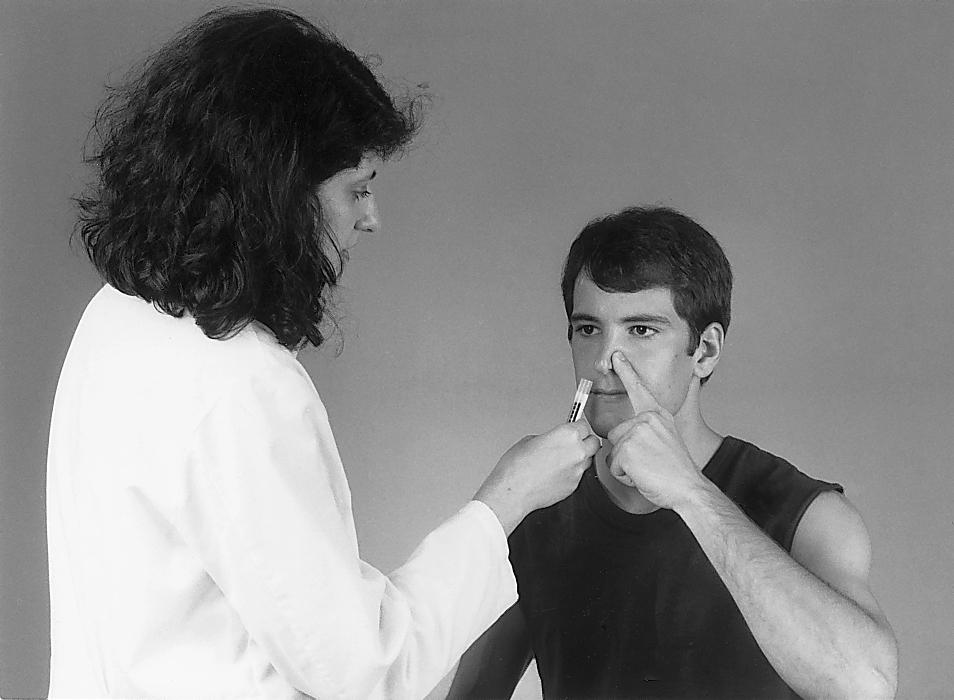Physical Address
304 North Cardinal St.
Dorchester Center, MA 02124
In many respects this chapter is a prologue to the experience of working directly with the patient. Now that many aspects of functional systems neurobiology have been mastered, the opportunity to apply this knowledge is at hand. The neurologic examination is an excellent example of how basic neuroscience can apply directly to events (both normal and abnormal) encountered in the clinical setting. After all, the neurologically compromised patient is simply a normal person whose nervous system is not functioning properly.
No other branch of medicine lends itself so well to the correlation of the signs and symptoms of disease with structure and function as does neurology. The neurologic diagnosis of the impaired patient is a deductive process and is reached by a synthesis of all of the details from the history, the examination, and laboratory studies. The neurologic examination is divided into four main segments: mental status, cranial nerves, motor and cerebellar, and sensory.
Fig. 33.1 shows a sample set of tools necessary to perform a routine neurologic examination: visual acuity card and eye occluder, ophthalmoscope, dilating eye drops, flashlight, test tube with coffee to assess smell, disposable tongue blade, safety pin, tissue paper, and cotton-tipped applicator. Tuning forks, measuring tape, and a reflex hammer, as well as a quarter or a wooden cube for sensation testing, should also be included.

The evaluation and the examination of a patient are different but intimately integrated aspects of the patient-physician encounter. In general, the examination is a small umbrella under the larger umbrella of evaluation ( Fig. 33.2 ).

Evaluation covers all the aspects related to a specific medical event ( Fig. 33.2 ). It includes the chief complaint, which is the main reason that the patient seeks medical attention at that time, and the history of present illness, which focuses on the details and circumstances surrounding the main complaint, such as time course (abrupt onset as opposed to slowly progressive), associated symptoms (pain, blurred vision, headache, inability to talk, etc.), and predisposing or concurrent factors (with exercise or physical activity, warm weather, or exposure to drugs). Remember that it is essential to obtain information from an observer, such as a family member or friend, to characterize many neurologic conditions (such as seizures, dementia, and loss of consciousness) when the patient may not be aware of the events. The past medical and surgical histories focus on learning facts about past illnesses; concurrent medical problems, such as hypertension, diabetes mellitus, or history of cancer, may be pertinent to the new medical complaint. Surgical procedures that the patient may have had in the past are also important clues in the medical history. Family history is an essential part of the medical history and may explain the present medical issue. For example, some forms of hand tremors or strokes at an early age may be genetically determined. Social history inquires about the patient’s habits such as smoking, alcohol or illicit drug abuse, lifestyle, and occupation. Medications that the patient is taking are also detailed in the history. Review of systems is a systematic general review of all systems, including cardiovascular, respiratory, genitourinary, gastrointestinal, musculoskeletal, endocrine, and hematology systems.
Physical examination, or simply examination, is an important part of the more extensive evaluation of the patient ( Fig. 33.2 ). In general, it includes the patient’s vital signs and a general examination by systems with a more focused examination of the system involved in the current medical problem. For example, if the patient complains of acute onset of chest pain and shortness of breath, a detailed cardiovascular examination is in order with a general examination of the abdomen and a brief neurologic examination. On the other hand, if a patient has sudden onset of weakness of the right side of the body and difficulty speaking, a detailed neurologic examination is called for.
Diagnostic studies ( Fig. 33.2 ) may be ordered as a result of the overall evaluation of the patient to confirm a possible diagnostic hypothesis. For example, chemical, cytologic, and bacteriologic examination of cerebrospinal fluid can be done to confirm suspected meningitis, or computed tomography or magnetic resonance imaging of the brain can be ordered to confirm the localization of a stroke and to determine whether it is ischemic or hemorrhagic.
Finally, the impression ( Fig. 33.2 ) of the evaluating physician of what and where the problem might be with recommendations on management and therapy indicated simply puts together the overall evaluation by the examiner and sets the immediate course of treatment and future health care plans for the patient.
The mental status examination starts first with an assessment of the level of consciousness of the patient. Orientation to time, place, and person should also be documented. Memory of past events and short-term memory as well as the ability to calculate are also evaluated at this time. This basic examination is known as the Folstein Mini-Mental Status test. Special tests of right parietal lobe function include drawing a clock face ( Fig. 33.3 ), bisecting a line, and copying a picture of a daisy or drawing a set of intersecting pentagons.

Speech disorders such as dysarthria are detectable in ordinary conversation and result from defects of articulation of the words secondary to tongue (cranial nerve XII), palate (cranial nerves IX and X), lips (cranial nerve VII), or pharyngeal muscle weakness or incoordination. Evidence of a speech disorder is usually pursued by asking the patient to repeat a difficult phrase like “Methodist Episcopal” or to repeat the sounds “puh-tuh-kuh” rapidly.
Language is the ability to use and to understand written and spoken speech and is a function of the cortical, thalamic, and basal nuclei language circuits located in the dominant cerebral hemisphere. Language is assessed by asking the patient to repeat words or phrases (“no ifs, ands, or buts”), to name simple objects (watch, finger, pen), to follow commands (touch your left shoulder, close your eyes, point to the ceiling), and to write a sentence and read it aloud.
Language abnormalities are called aphasias. There are two major types: nonfluent aphasia and fluent aphasia. In nonfluent aphasia, the patient has difficulty with verbal self-expression, producing the words only with great effort, but is able to understand and to follow commands appropriately. Nonfluent aphasia is also called an expressive or Broca aphasia; a lesion resulting in this type of deficit is found in the inferior frontal gyrus (sometimes called the Broca convolution) specifically involving the pars opercularis and the pars triangularis. In fluent aphasia, the patient has normal or even increased production of words, sometimes in long sentences with normal prosody (rhythm of speech); well-articulated but frequent neologisms (a series of meaningless words) give these sentences no content or meaning. In fluent aphasia, also called a receptive or Wernicke aphasia, neither the patient nor the examiner is able to understand the meaning of the patient’s speech. A lesion of the lateral aspect of the dominant hemisphere in the area of the supramarginal and angular gyri (and sometimes adjacent portions of the superior temporal lobe) may result in fluent aphasia.
The olfactory nerve ( cranial nerve I ) is rarely tested because of the deleterious effects of smoking and sinus disease on the sense of smell in the general population. The nerve can be unilaterally damaged by trauma or a tumor of the skull base in the olfactory groove, such as an olfactory groove meningioma (see Fig. 7.9 ). Total loss of the ability to smell ( anosmia ) is always associated with the inability to taste food ( ageusia ) as well, a familiar example being the unappealing taste of food associated with the nasal congestion of a head cold. Dysgeusia is an unappealing or altered sense of taste, and parosmia is an altered or perverted perception of odors.
An olfactory stimulus should be nontrigeminal, that is, it should not tickle or irritate the inside of the nose (as does ammonia, for example), which is innervated by the trigeminal nerve. Commonly used substances are vanilla, coffee, and perfumed soap. With the patient’s eyes closed, occlude one nostril and bring a vial of the substance near the open nostril ( Fig. 33.4 ). Ask the patient whether he or she smells something. The sensing of odor is more important than its identification. The process is then repeated for the other nostril.

Become a Clinical Tree membership for Full access and enjoy Unlimited articles
If you are a member. Log in here